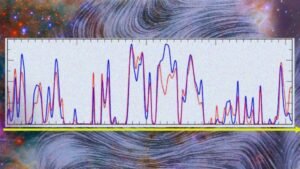Webb reveals insights into Sagittarius B2, the largest star-forming region in the galaxy

The NASA/ESA/CSA has directed its focus towards Sagittarius B2, the largest and most active molecular cloud in the Milky Way. Positioned just a few hundred light-years from the Sagittarius A* black hole, this massive cosmic incubator is responsible for half of the stars in the central region of the galaxy, despite containing only 10% of the available gas there.
Insightful Observations with Webb
Using its infrared instruments, Webb has managed to partially penetrate the dense clouds of gas and dust surrounding Sagittarius B2. This has provided a glimpse into both the cold environments within the cloud and the warm surroundings that envelop it. The primary goal of this mission is to unravel the reasons behind the cloud’s remarkably high productivity compared to its surroundings.
Unprecedented Imaging with MIRI
Astronomers have obtained unprecedented images of the region thanks to the MIRI instrument, specialized in mid-infrared observations. These images reveal the incandescent cosmic dust, heated by the presence of massive newborn stars. In particular, Sagittarius B2 North, known as one of the richest molecular areas in the cosmos, has been observed with unparalleled clarity. The comparison between MIRI and NIRCam images showcases the stark contrast between the shining gas and dust in MIRI images and the multicolored stars and luminous clouds visible in NIRCam images. The darkest areas in the images, filled with gas and dust, represent potential future stellar nurseries.
Unraveling the Mysteries
The analysis of the newly discovered stars in Sagittarius B2 will provide valuable insights into their masses and ages. These factors are crucial in determining whether the intense star formation observed in this region is a sustained phenomenon spanning millions of years or a more recent occurrence. Scientists are particularly intrigued by the paradox of how this cloud, with a fraction of the gas present in the galactic center, manages to produce such a significant number of stars. Resolving this enigma will not only enhance our understanding of the inner workings of our galaxy but also shed light on similar phenomena in other galaxies.






